
We offer a comprehensive curriculum developed by an international team, experienced teachers, and a focus on individualized and project-based learning.

We offer a comprehensive curriculum developed by an international team, experienced teachers, and a focus on individualized and project-based learning.
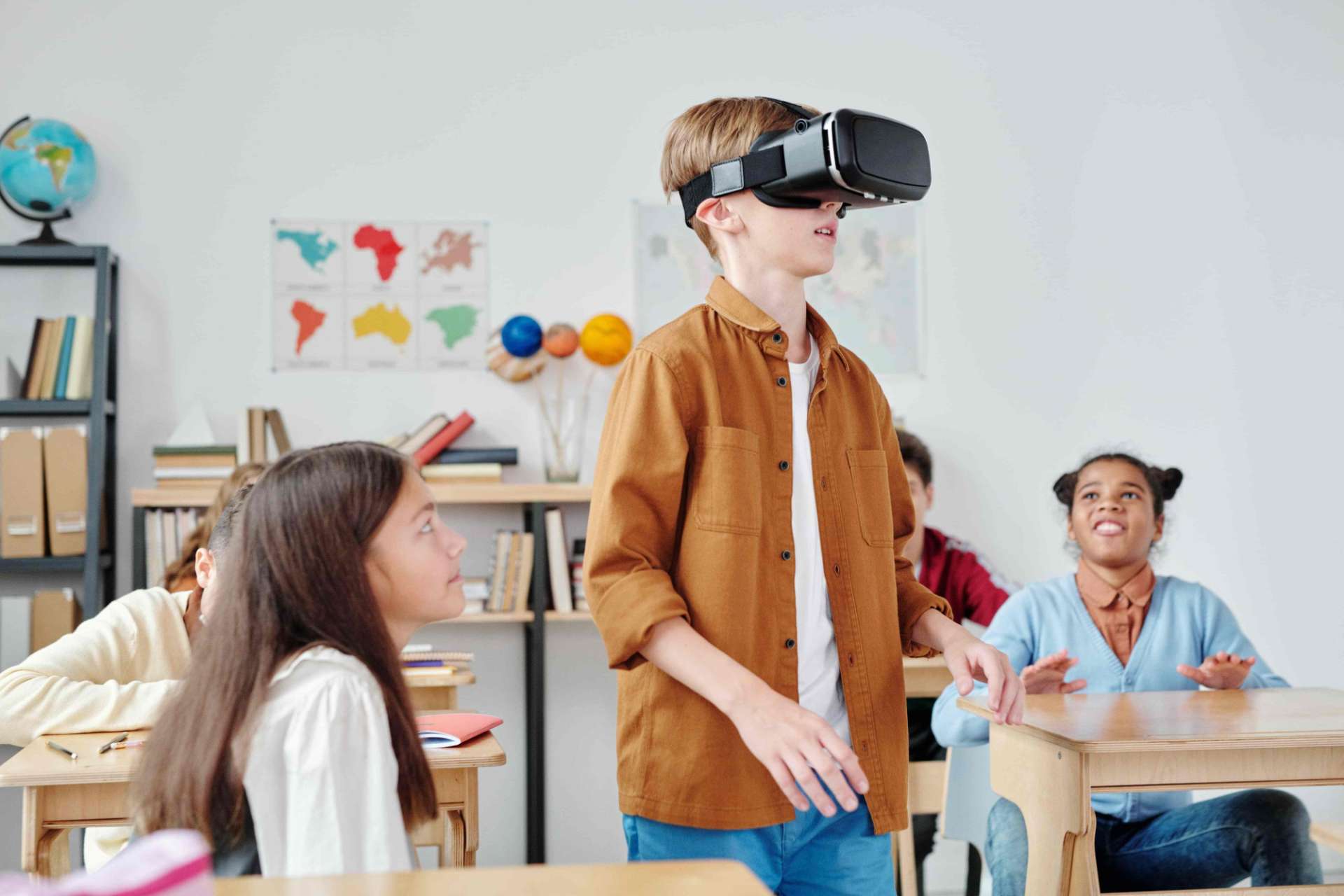
Learning with virtual reality is no longer a futuristic fantasy; it’s rapidly transforming how we educate and learn. Imagine students exploring the depths of the Amazon rainforest or dissecting a human heart without ever leaving their classroom.
In an increasingly digital world, traditional teaching methods are struggling to keep up with the evolving needs of learners. Immersive learning offers a dynamic and engaging alternative, catering to diverse learning styles and fostering essential 21st-century skills.
This blog post delves into the transformative potential of AR/VR in Philippine high schools, exploring its benefits and addressing practical considerations for implementation.
Immersive learning leverages technology to create engaging, interactive experiences that transport learners to simulated or augmented environments. Unlike traditional learning methods, immersive learning actively involves students in the learning process, allowing them to explore, experiment, and learn by doing.
Augmented Reality (AR), meanwhile, depicts digital content onto the real world to improve the learner’s understanding of their environment. Imagine students using AR apps on their smartphones or tablets to visualize 3D models of historical artifacts or dissect virtual organisms without physical dissection.
Virtual Reality (VR), on the other hand, creates entirely immersive, computer-generated environments. With VR headsets, students can be transported to ancient civilizations, explore the human body from the inside, or even travel to distant planets, all from within the classroom.
Several key components contribute to effective immersive learning experiences with AR/VR. First, interactive simulations allow students to actively participate in the learning process, manipulating objects, conducting experiments, and making decisions within the virtual environment.
Sensory feedback further enhances immersion by engaging multiple senses. VR headsets with haptic technology, for example, can simulate the sensation of touch, allowing students to “feel” virtual objects. Similarly, spatial audio can create a realistic soundscape, further immersing learners in the virtual environment.
Personalized learning paths are another crucial aspect of immersive learning with AR/VR. These technologies can adapt to individual learning styles and paces, providing customized experiences that cater to each student’s needs.
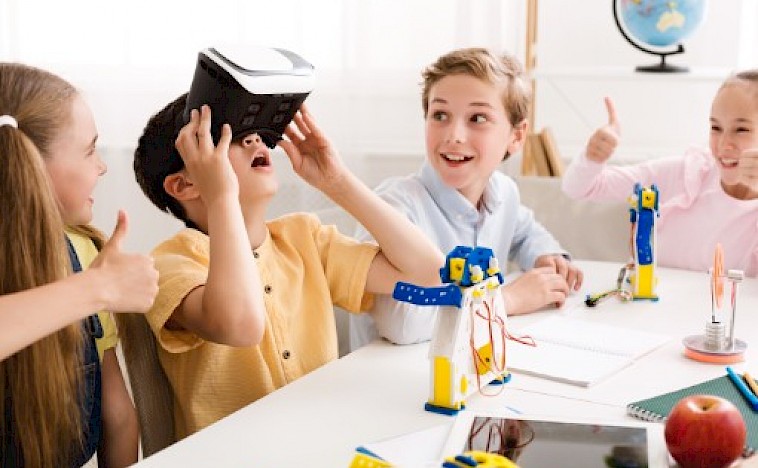
Learning with virtual reality offers a plethora of benefits for both students and educators. By creating engaging and interactive experiences, AR/VR can transform the learning process, making it more enjoyable, effective, and relevant.
For students, immersive learning can lead to increased motivation and engagement. The novelty and interactivity of AR/VR experiences can spark curiosity and excitement, making learning more enjoyable and stimulating.
Moreover, AR/VR can cater to diverse learning styles. Visual learners can benefit from 3D visualizations and interactive simulations, while kinesthetic learners can engage in hands-on activities within the virtual environment.
Beyond academic content, learning with virtual reality can help students develop essential 21st-century skills. By collaborating with peers in virtual environments, students can enhance their communication and teamwork skills.
Problem-solving and critical thinking are also fostered through interactive simulations and challenges within AR/VR experiences. Students can experiment with different solutions, learn from their mistakes, and develop their analytical skills in a safe and controlled environment.
Furthermore, immersive learning can nurture creativity and innovation. AR/VR provides students with the tools to express their ideas, design and build virtual objects, and explore new possibilities.
The applications of AR/VR in education are vast and varied, spanning across different subjects and disciplines. Let’s explore some specific examples of how these technologies can be integrated into the Philippine high school curriculum.
In history classes, students can use VR to travel back in time and witness historical events firsthand.
Imagine exploring the ancient Banaue Rice Terraces, experiencing the bustling streets of Intramuros during the Spanish colonial era, or witnessing key moments in Philippine history, such as the People Power Revolution.
Science classes can come alive with AR/VR. Students can dissect virtual organisms without the need for physical specimens, explore the human body from the inside, or even conduct virtual experiments with interactive simulations.
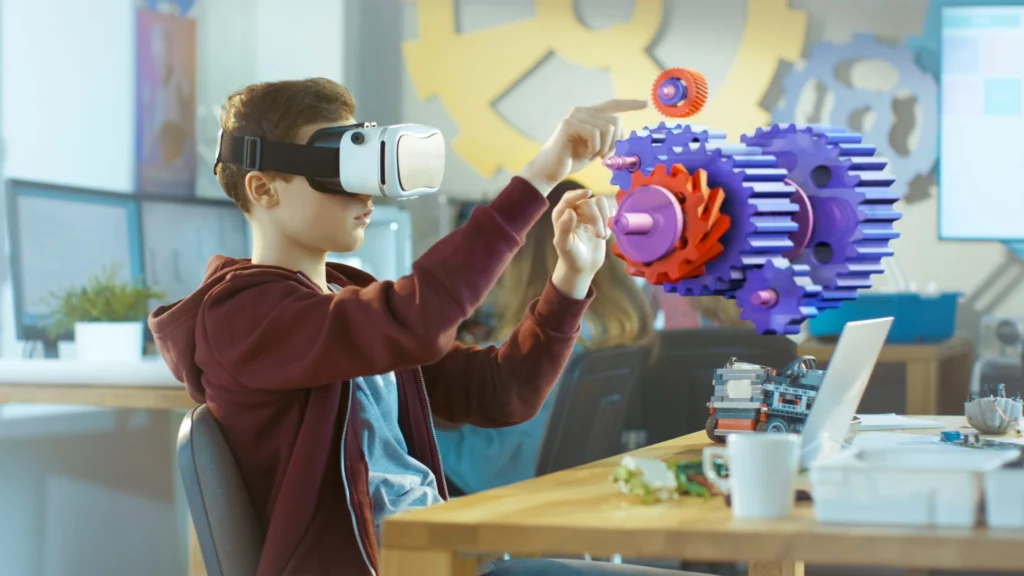
In arts and literature, AR/VR can provide students with new tools for creative expression. Students can create virtual sculptures, design interactive stories, or even step inside literary works through immersive experiences.
Even seemingly mundane subjects like mathematics can be made more engaging with AR/VR. Students can visualize complex geometric shapes, explore mathematical concepts in interactive games, or even apply their knowledge to solve real-world problems in simulated environments.
These are just a few examples of how AR/VR can be integrated into the high school curriculum in the Philippines.
While the benefits of learning with virtual reality are undeniable, it’s essential to acknowledge the potential challenges associated with implementing immersive learning in Philippine high schools.
One common concern is the cost of AR/VR equipment and software. While the initial investment can be significant, it’s crucial to consider the long-term benefits and potential cost savings.
Another challenge is ensuring accessibility for all students. It’s crucial to consider students with disabilities and ensure that AR/VR experiences are inclusive and accessible. Schools should provide adaptive equipment, alternative input methods, and personalized support to cater to diverse needs.
Adequate teacher training is vital for the successful implementation of immersive learning. Educators need to be equipped with the skills and knowledge to effectively integrate AR/VR into their teaching practices.
Professional development programs, mentorship opportunities, and ongoing support are crucial for empowering teachers to confidently utilize these technologies.
Furthermore, schools need to address concerns about potential health and safety issues associated with AR/VR use. Clear guidelines and protocols should be established to ensure student well-being.
This includes managing screen time, providing comfortable and ergonomic equipment, and addressing potential motion sickness or eye strain. By proactively addressing these challenges, schools can create a supportive and inclusive environment for immersive learning with AR/VR.
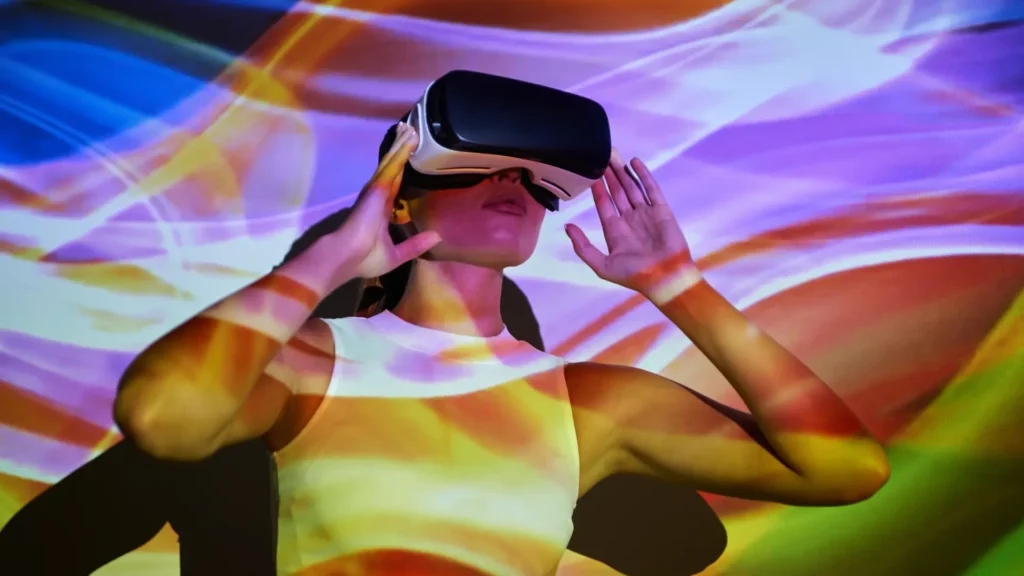
For high schools in the Philippines interested in adopting AR/VR for immersive learning, careful planning and strategic implementation are key. Here’s some practical advice to guide your journey:
Start with a pilot program in a specific subject or grade level. This allows you to test the waters, gather feedback, and refine your approach before widespread implementation. Focus on subjects where AR/VR can have the most significant impact, such as science, history, or the arts.
Collaborate with teachers and involve them in the planning process. Their input is invaluable in identifying suitable AR/VR applications and ensuring effective integration into the curriculum. Provide teachers with the necessary training and support to confidently utilize these technologies.
Choose AR/VR tools and platforms that align with your curriculum goals and budget. Consider factors such as ease of use, content quality, and compatibility with existing devices. Explore open educational resources and free AR/VR apps to supplement commercial solutions.
Create a dedicated space for immersive learning. This could be a designated classroom or a flexible learning space equipped with the necessary technology and infrastructure. Ensure the space is comfortable, safe, and conducive to learning.
Communicate the benefits of immersive learning to parents and the wider community. Showcase successful examples, address potential concerns, and foster excitement about the transformative potential of AR/VR in education.
While widespread adoption of immersive learning in Philippine high schools is still in its early stages, there are promising examples of successful pilot programs and initiatives.
For instance, some schools have partnered with organizations like the Philippine Society of Information Technology Educators (PSITE) to implement AR/VR workshops and training programs for teachers.
These initiatives aim to equip educators with the skills and knowledge to effectively integrate immersive technologies into their classrooms.
Several universities in the Philippines, such as De La Salle University and the University of the Philippines, have also begun exploring the use of AR/VR in their education programs.
These initiatives often involve collaborations with technology companies and research institutions to develop innovative applications and learning experiences.
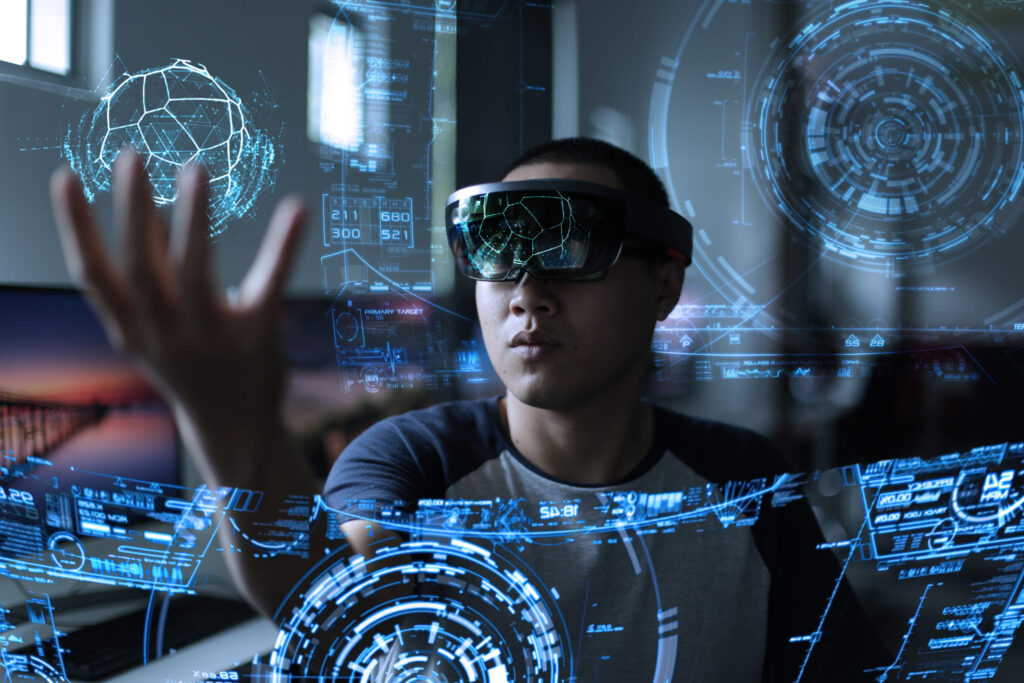
By highlighting these successful case studies and pilot programs, we can inspire other schools to embrace immersive learning and share best practices. Creating a community of practice where educators can connect, collaborate, and learn from each other is crucial for driving innovation and adoption.
As more schools in the Philippines experiment with AR/VR, we can expect to see a growing body of evidence demonstrating the positive impact of immersive learning on student engagement, knowledge retention, and skill development.
This evidence will be crucial in advocating for wider adoption and ensuring that all students have access to the transformative power of immersive learning with AR/VR.
Learning in virtual reality offers a unique opportunity to transcend the limitations of traditional classrooms and engage students in profound ways. Let’s delve deeper into the pedagogical advantages that make this technology so transformative.
One significant advantage is the ability to cater to diverse learning styles. Visual learners thrive in environments rich in imagery and interactive elements, while kinesthetic learners benefit from the hands-on experiences VR provides.
Auditory learners can absorb information through immersive soundscapes and interactive dialogues. By catering to these various learning preferences, VR ensures inclusivity and maximizes learning potential for all students.
Imagine students exploring the intricate workings of the human brain in a 3D VR model, or experiencing the impact of climate change in a simulated environment. These immersive experiences create lasting impressions and facilitate a deeper understanding of abstract or challenging topics.
The future of learning with virtual reality in the Philippines is bright, filled with possibilities for innovation and transformation. As technology continues to advance and become more accessible, we can expect to see wider adoption of VR in educational settings across the country.
Imagine a future where every student has access to immersive learning experiences, regardless of their location or socioeconomic background. VR can bridge educational gaps, providing equal opportunities for all learners to thrive.
Furthermore, VR can play a crucial role in preparing students for the future workforce. By developing essential 21st-century skills such as critical thinking, problem-solving, and collaboration, VR equips students with the tools they need to succeed in a rapidly evolving world.
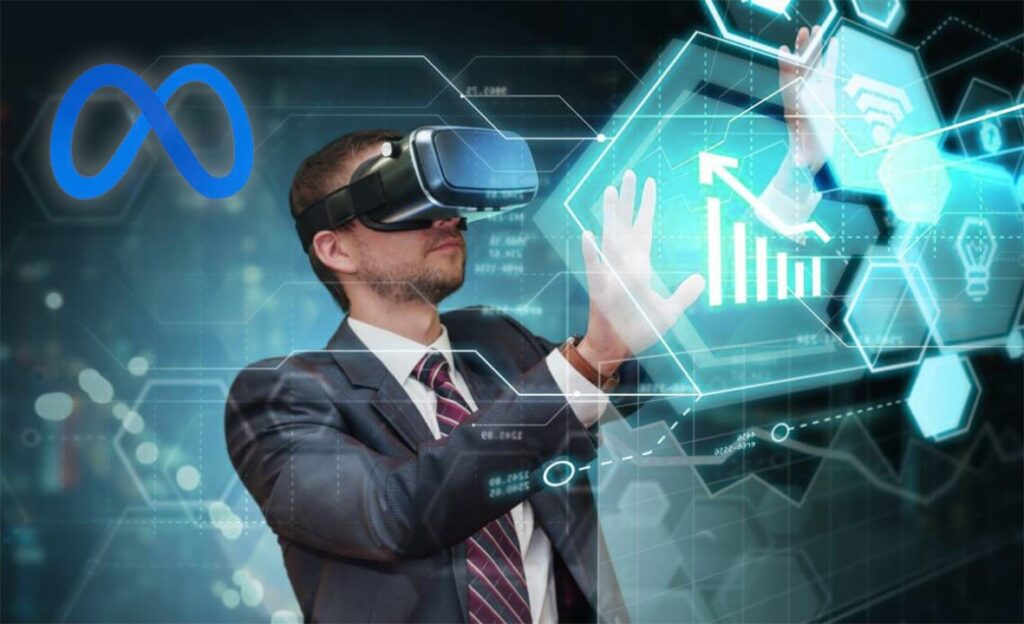
To fully realize the potential of learning in virtual reality, it’s crucial for stakeholders across the education sector to embrace this technology and invest in its development.
The government can play a key role by providing funding and support for VR initiatives in schools. This includes investing in infrastructure, training educators, and developing relevant VR content aligned with the Philippine curriculum.
Educational institutions should actively explore the integration of VR into their teaching practices. This involves creating dedicated VR spaces, providing teachers with professional development opportunities, and fostering a culture of innovation and experimentation.
It’s clear that AR/VR technologies hold immense potential to revolutionize education in the Philippines. By creating engaging, interactive experiences, learning with virtual reality can transform how students learn and teachers teach.
From virtual field trips to interactive simulations, AR/VR offers a myriad of opportunities to deepen understanding, foster creativity, and develop essential 21st-century skills. While implementation requires careful planning and investment, the benefits far outweigh the challenges.
Embrace the future of education and unlock the transformative power of immersive learning with AR/VR. By investing in these technologies, we can empower students in the Philippines to thrive in the digital age and beyond.

FutureClassroom is Southeast Asia's largest coding platform for K-12, empowering students with essential skills in Web Development, Game Development, Python, and AI. Aligned with Cambridge and Pearson standards, our platform combines interactive learning and real-world projects to prepare young learners for a future driven by technology.
View all posts
FutureClassroom is Southeast Asia's largest coding platform for K-12, empowering students with essential skills in Web Development, Game Development, Python, and AI. Aligned with Cambridge and Pearson standards, our platform combines interactive learning and real-world projects to prepare young learners for a future driven by technology.
Get all the latest information, support and guidance about the cost of living with kindergarten.
Start Registration